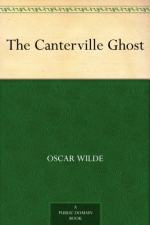|
This section contains 305 words (approx. 1 page at 400 words per page) |

|
The Canterville Ghost Summary & Study Guide Description
The Canterville Ghost Summary & Study Guide includes comprehensive information and analysis to help you understand the book. This study guide contains the following sections:
This detailed literature summary also contains Bibliography and a Free Quiz on The Canterville Ghost by Oscar Wilde.
"The Canterville Ghost" was first published serially in 1887 in Court and Society Review, a magazine for the leisured upper classes. The story did not immediately receive much critical attention, and indeed Wilde was not viewed as an important author until the publication, during the 1890s, of his novel The Picture of Dorian Gray (1891) and of several well-received plays, including The Importance of Being Earnest (1895). In 1891, "The Canterville Ghost" was republished in Lord Arthur Savile's Crime, and Other Stories.
The collected stories were severely criticized by contemporary reviewers; early critics found Wilde's work unoriginal and derivative. More recently critics have celebrated Wilde's ability to play with the conventions of many genres. In "The Canterville Ghost," Wilde draws upon fairy tales, Gothic novels, and stories of Americans abroad to shape his comic ghost story. Though Wilde offers a comic treatment, he finds inspiration for Sir Simon's character in Alfred Tennyson's serious poem "Maud," as well as in the Romantic poet Samuel Taylor Coleridge's "Christabel." Critics also point to the possible influence of Henry James's Portrait of a Lady (1881) on "The Canterville Ghost."
Wilde used a myriad of comic sources to shape his story. Thomas De Quincey's "Murder Considered as One of the Fine Arts," a satirical essay, is one apparent source. Wilde would also have been aware of Jane Austen's Northanger Abbey (1818), a parody of the Gothic novel so popular in the early nineteenth century. Finally, Wilde's own experience on the lecture circuit in the United States undoubtedly helped him ridicule stereotypical American behavior. Indeed, one of the major themes in the story is the culture clash between a sixteenth-century English ghost and a late nineteenth-century American family. But the story also examines the disparity between the public self and the private self, a theme to which Wilde would return again in his later writings.
Read more from the Study Guide
|
This section contains 305 words (approx. 1 page at 400 words per page) |

|



